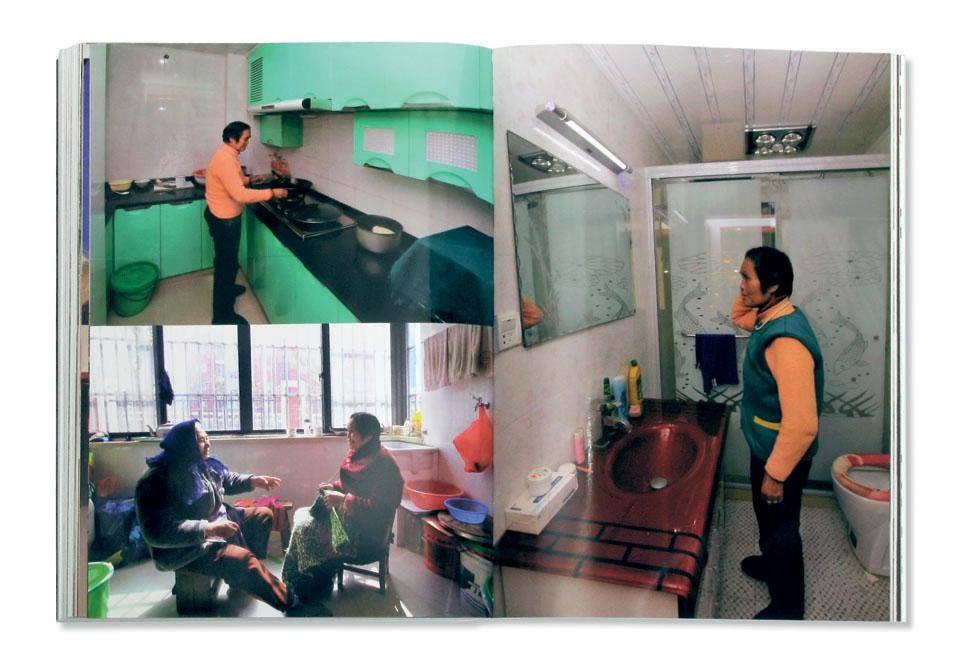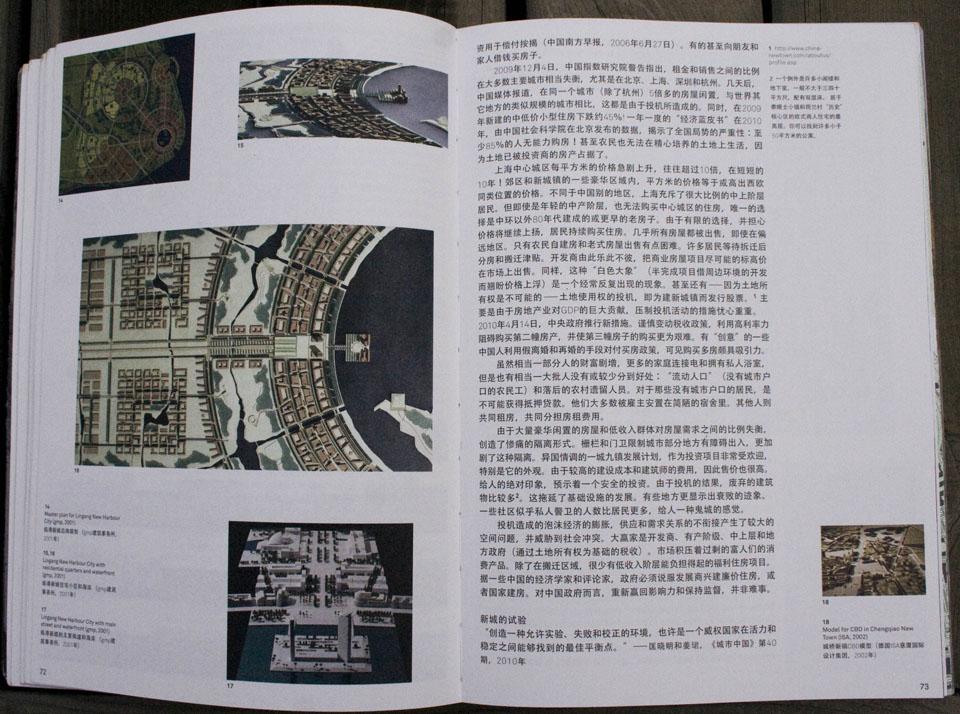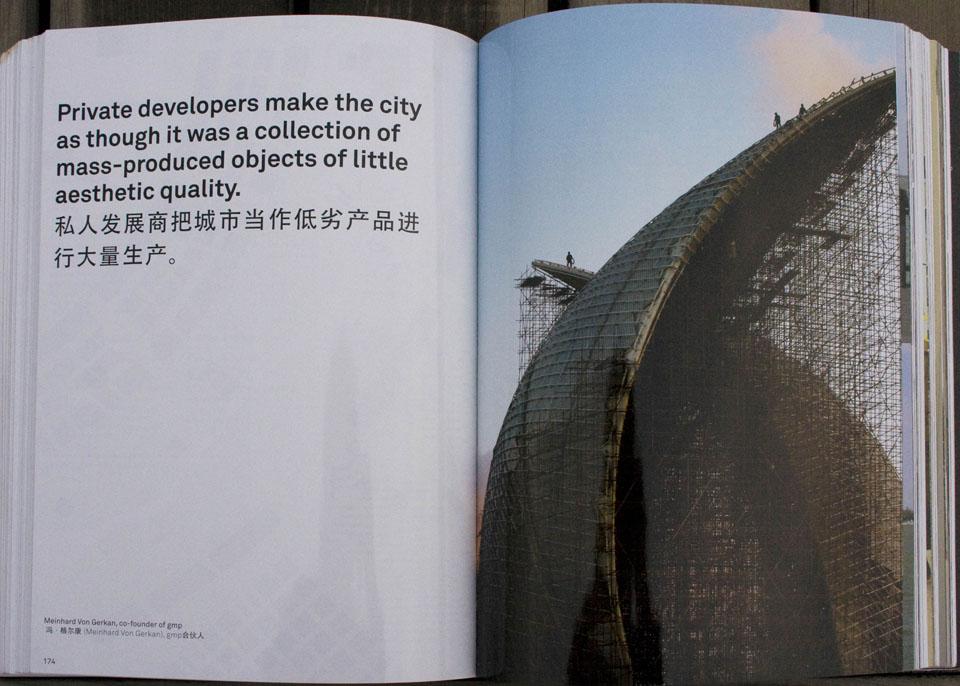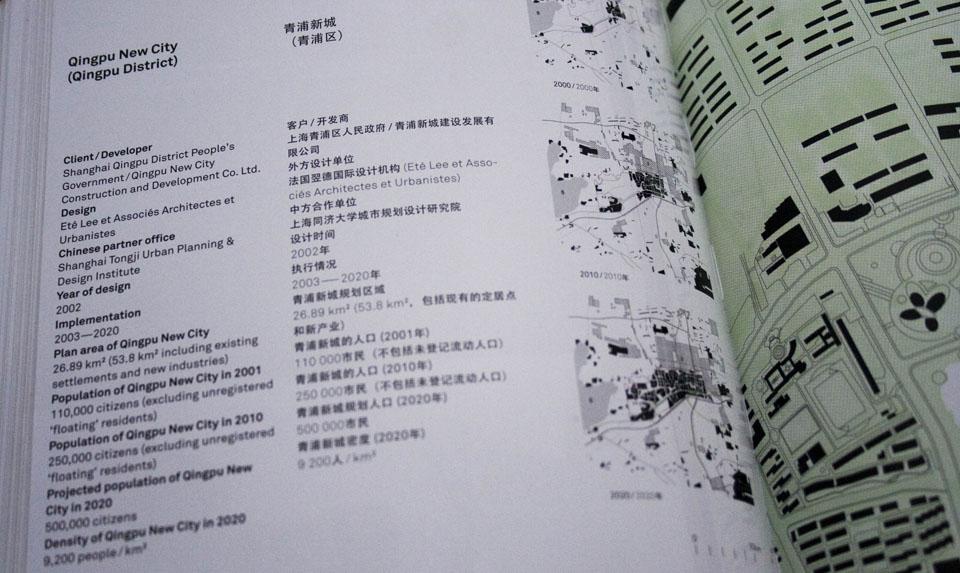One of the main impacts of the rapid economic growth in China is the structure of urbanization and the radical reset of balance between the metropolis and rural areas; in Shanghai New Towns: Searching for Community and Identity in a Sprawling Metropolis (in English and Mandarin) released by the Dutch publisher 010, Harry den Hartog produces the results of a massive act of collective research about development policies and urban planning actions in Shanghai, China's largest city, in the immediate past and near future.
In 2001 the Chinese government launched an urban development strategy called the One City, Nine Towns Development Plan, that aimed to overcome the role of the concentrated metropolis to instead shift to the development of a multi-centered approach. This model laid out a plan for new urban structure with ten projected cities—really one medium-sized city surrounded by nine towns—with the aim of avoiding urban sprawl by installing a soft urbanization model in distinct but interconnected economic districts. The research tells the story of the plan development in the Shanghai area, and it documents the current processes and actions to build these new towns, using maps and other cross-referenced data to analyze these transformative processes.
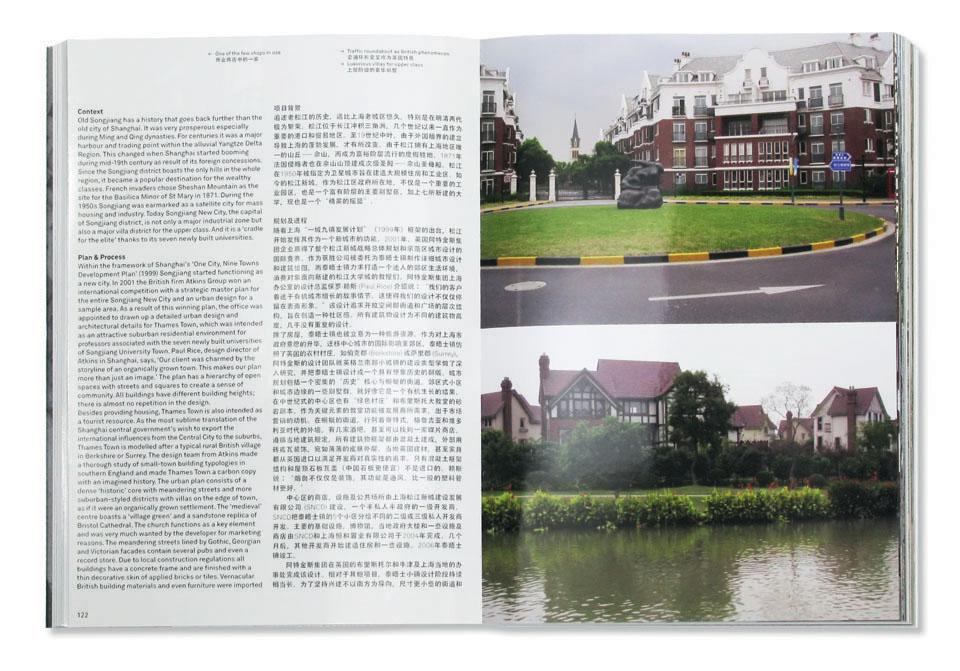
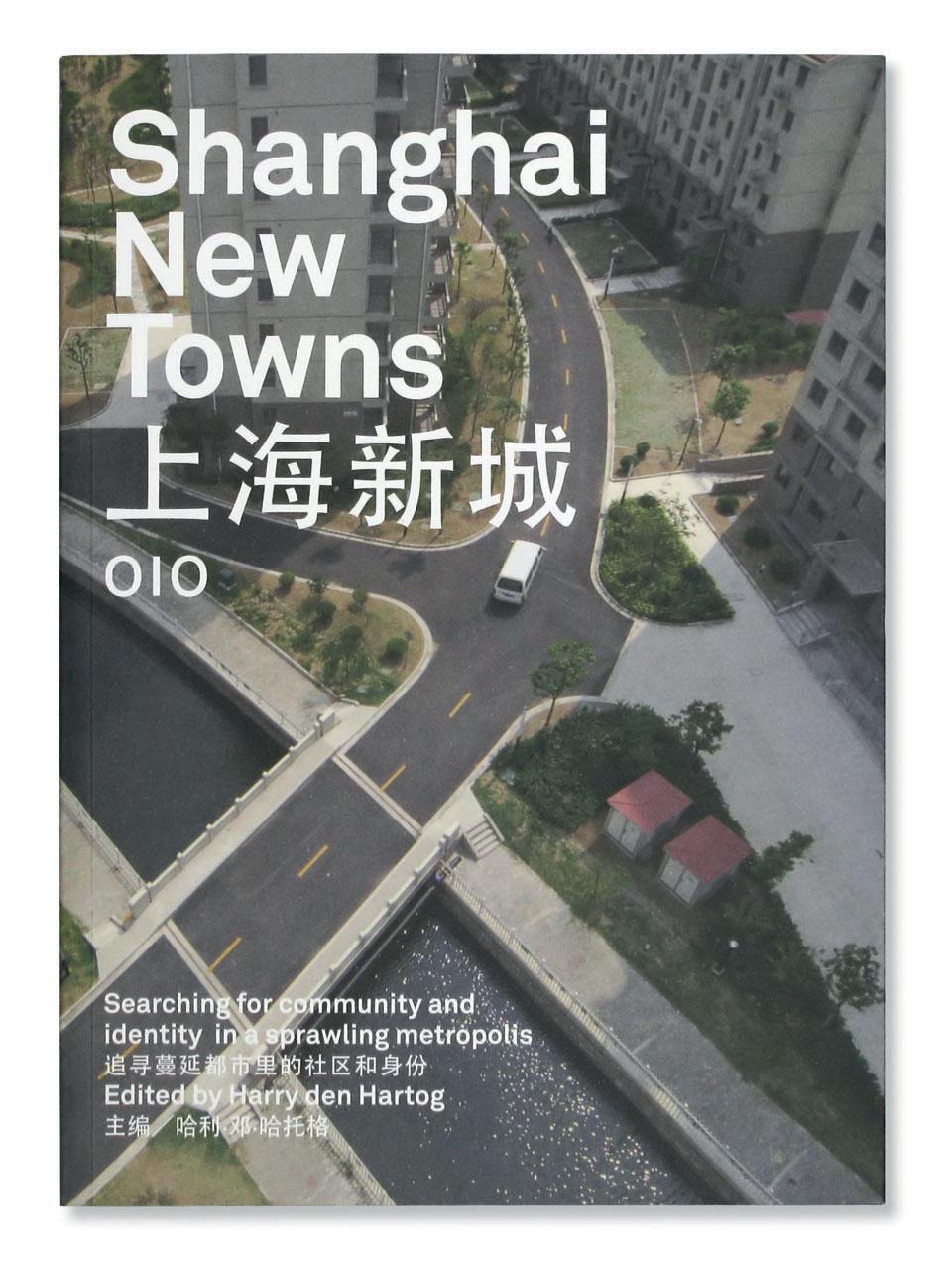
These models are not fully innovative from the point of view of design concepts, but surely they innovate in the way they are applied to the Chinese-specific context, and represent a hybrid model between the state planning and the market driven development. Ambitiously, these new cities promise to be completely self-sufficient, without compromising metropolitan amenities, suggesting a model for (and if they are successful, concretely provide to them) comprehensive and satisfying lifestyles. In particular, and this is definitely not easily assumed in Chinese cities, all of these projects take into account the role of public and open spaces, and a lot of greenery. The book deeply analyzes these processes through several case studies which point out the success of some of the new communities, as well as the failures of actual ghost or incomplete cities.
During the Expo 2010, Shanghai promised to put these new urban potentials on show, and indeed the Chinese model aims to be a concrete new form of urbanism to reduce the pressure of development on the metropolis and to extend the economic benefits to periurban areas.
